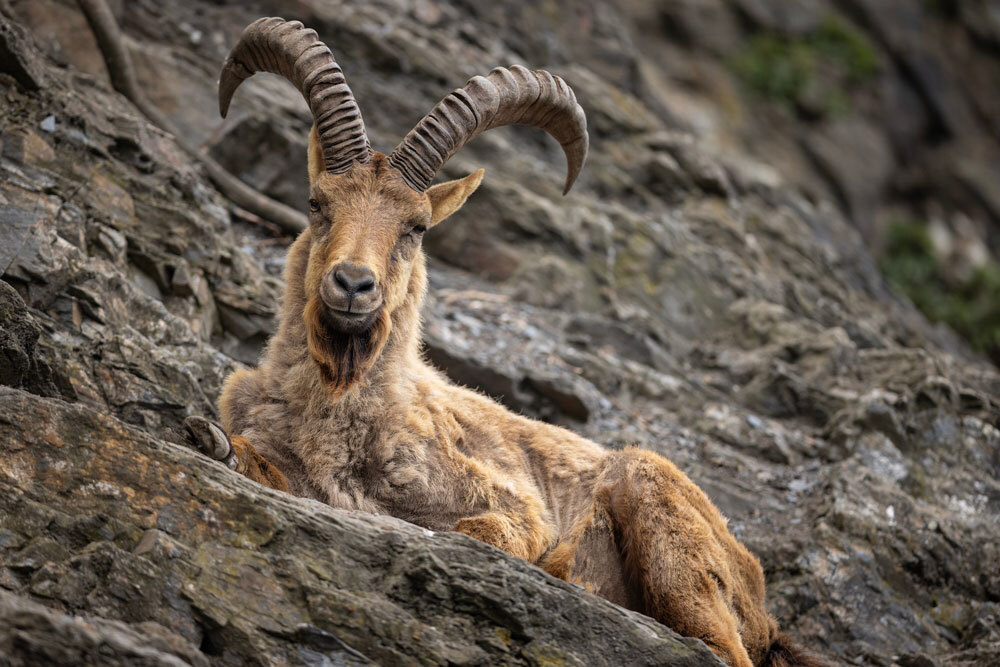Tur are robust wild goats endemic to Russia’s Caucasus Mountains. There are two principal species—the West Caucasian tur (Capra caucasica) and the East Caucasian tur (Capra cylindricornis)—with the Mid and Kuban tur representing hybrid populations in the central range. Bucks can weigh up to 100 kg and stand around one metre tall. Their coat is grey‑brown with a darker dorsal stripe; West Caucasian turs have scimitar‑shaped horns reminiscent of the bezoar ibex, while East Caucasian turs carry heavy cylindrical horns that curve backwards and inward. Living above the tree line on precipitous cliffs, turs are widely regarded as some of the most demanding mountain trophies.

Tur hunting season runs from August into early November. Early hunts in August and September are favoured because animals feed openly in alpine meadows before snow drives them into rocky recesses. Outfitters typically ride horses to high camps and then establish spike camps on ridges above the herds; from there, hunters glass slopes and stalk down toward feeding tur, taking advantage of the animals’ tendency to look downhill for danger. Spot‑and‑stalk is the dominant method, although organised drives may be used when several hunters are present. Good physical condition and acclimatisation to altitude are essential, as shots are often taken from awkward positions on steep scree.
Because tur are confined to a small portion of the Caucasus, hunting is strictly regulated. Quotas are issued by Russian authorities, and seasons are short; unregulated poaching and habitat degradation have historically reduced populations, but well‑regulated trophy hunting programmes now fund anti‑poaching patrols and local infrastructure. The four recognised trophies—West Caucasian, East Caucasian, Kuban and Mid Caucasian turs—are managed separately and have slightly different horn shapes and colouration. Revenue from hunts provides livelihoods for highland communities and encourages preservation of alpine pastures. Because animals live at high elevations, hunts are often cancelled due to weather, so bookings typically include extra days to ensure success.
Turs are diurnal, feeding on alpine grasses and herbs in the early morning and late afternoon and resting in the shade of overhangs at midday. When disturbed, they tend to climb higher rather than flee downhill, and old males will often stand watch on exposed rocks while the herd feeds. The age of a tur can be estimated by counting the annuli on its horns, which form one ring each winter. Traditional Caucasian households display tur horns as symbols of strength and honour, and hospitality rituals often involve sharing stories of past mountain hunts.
Tur can be found in the following location:
Tur has the following variations:
- West Caucasian Tur
- East Caucasian Tur
- Kuban Tur
- Mid Caucasian Tur
Start Your Adventure



